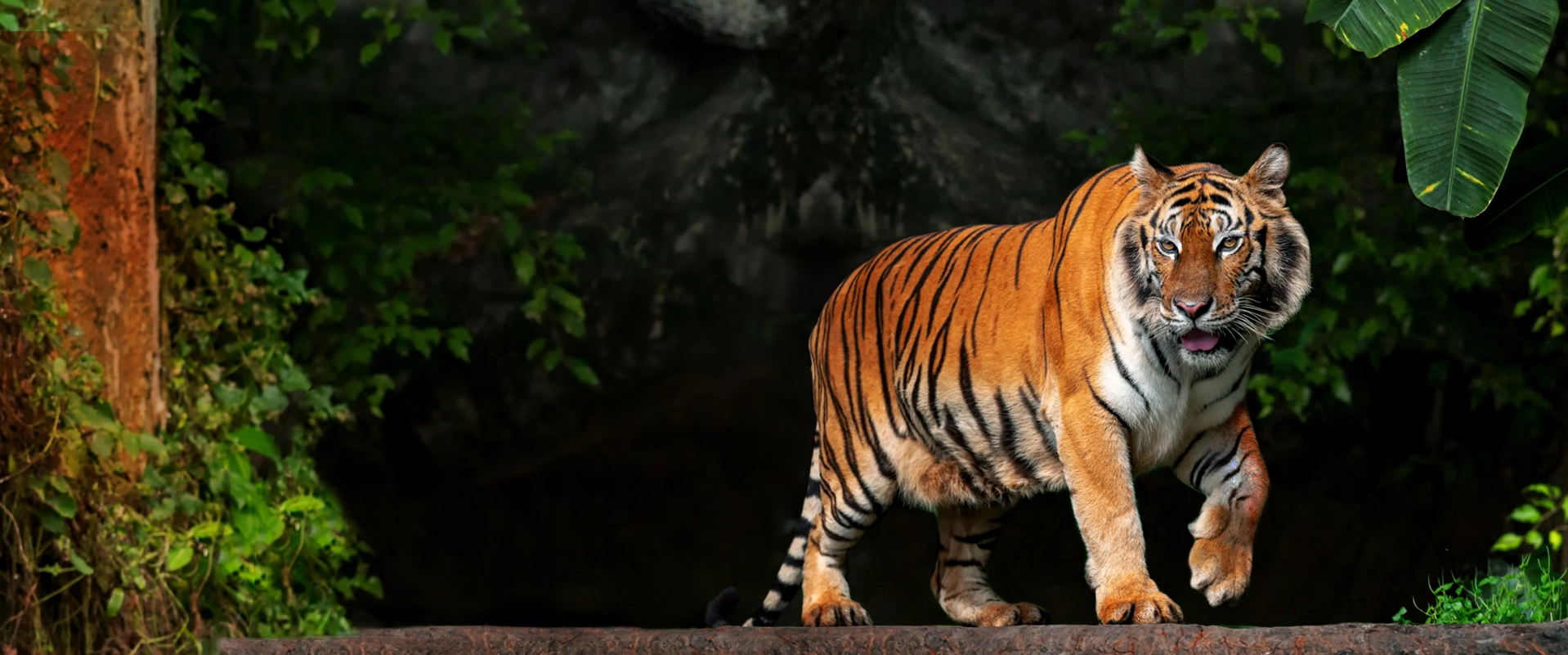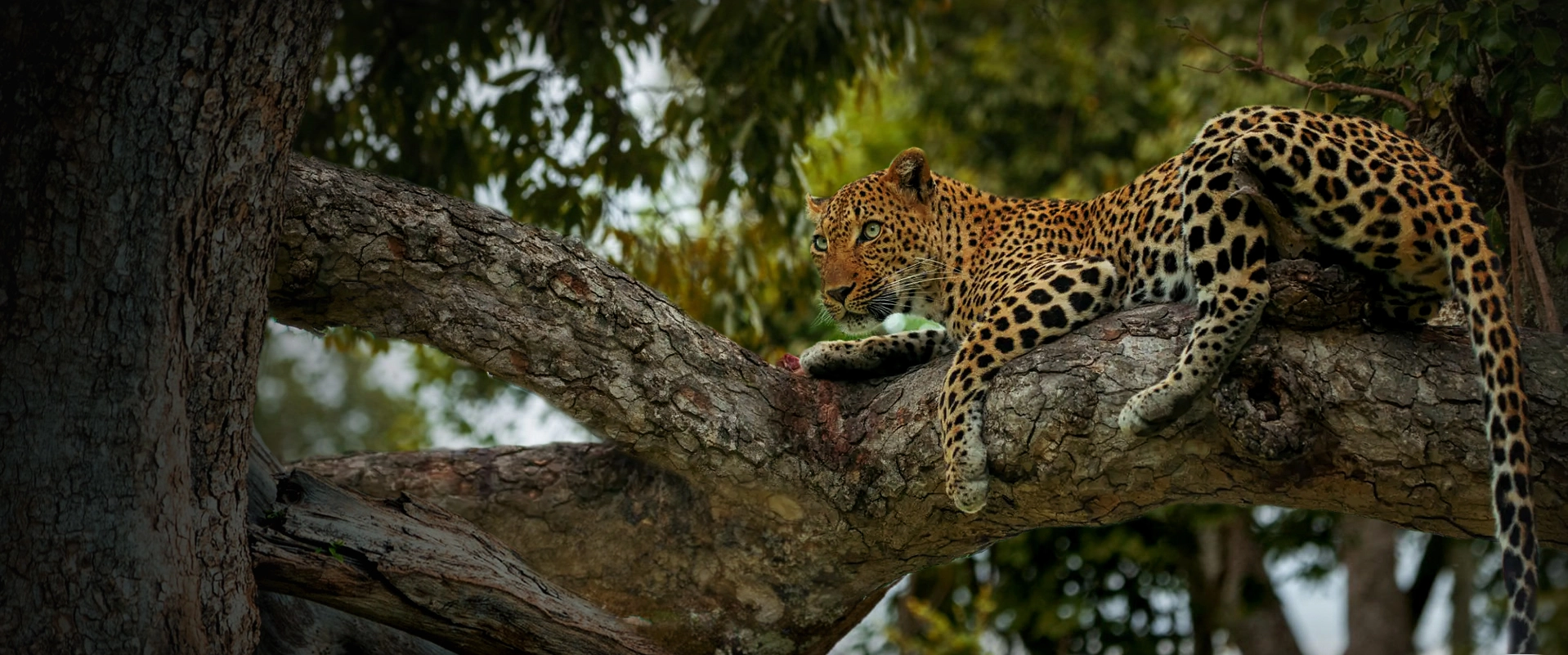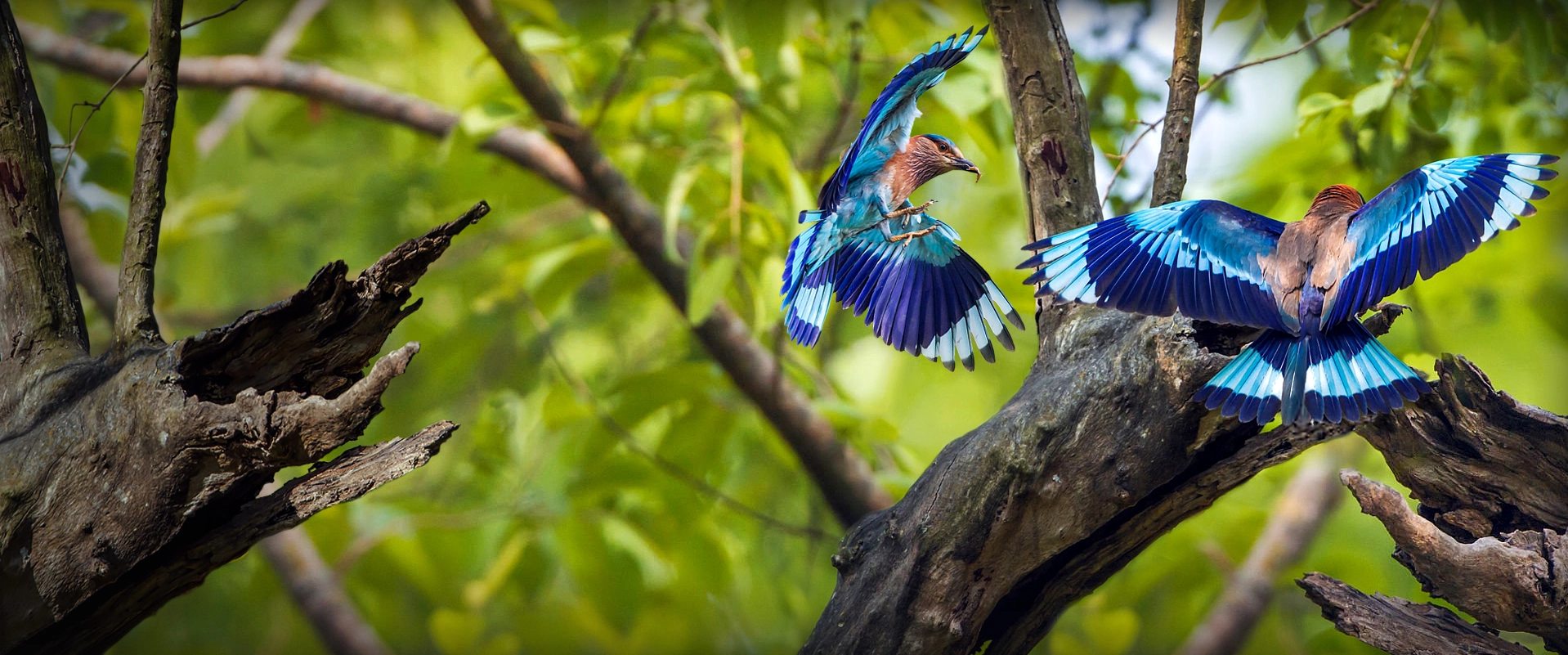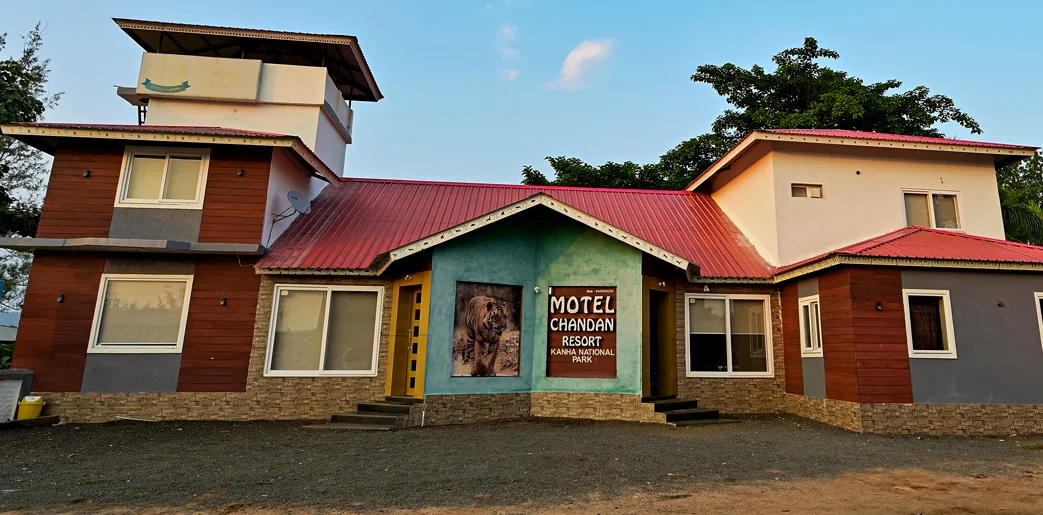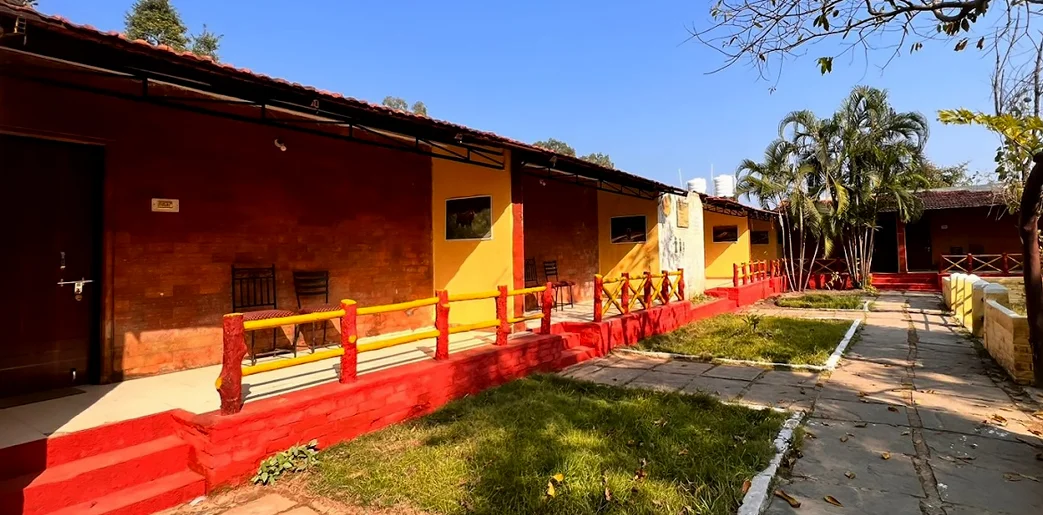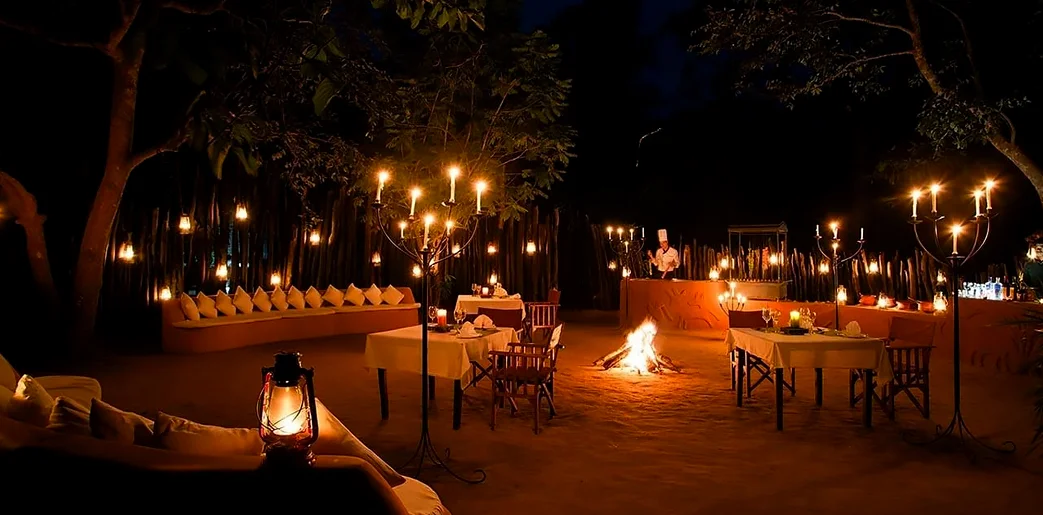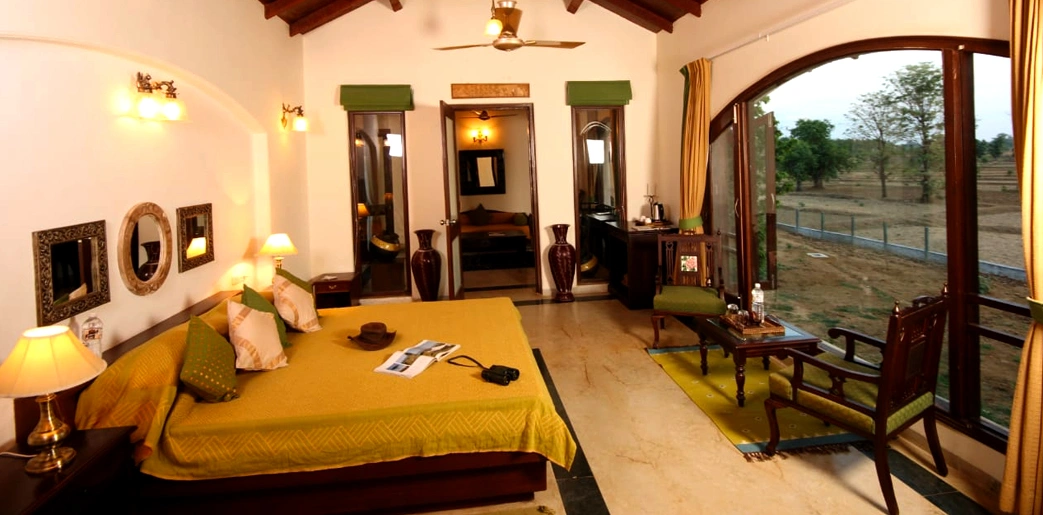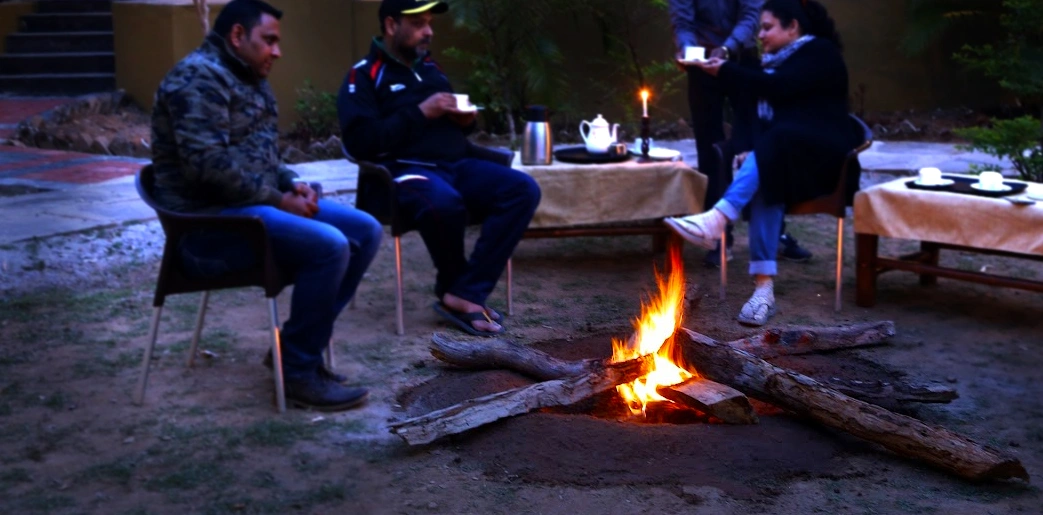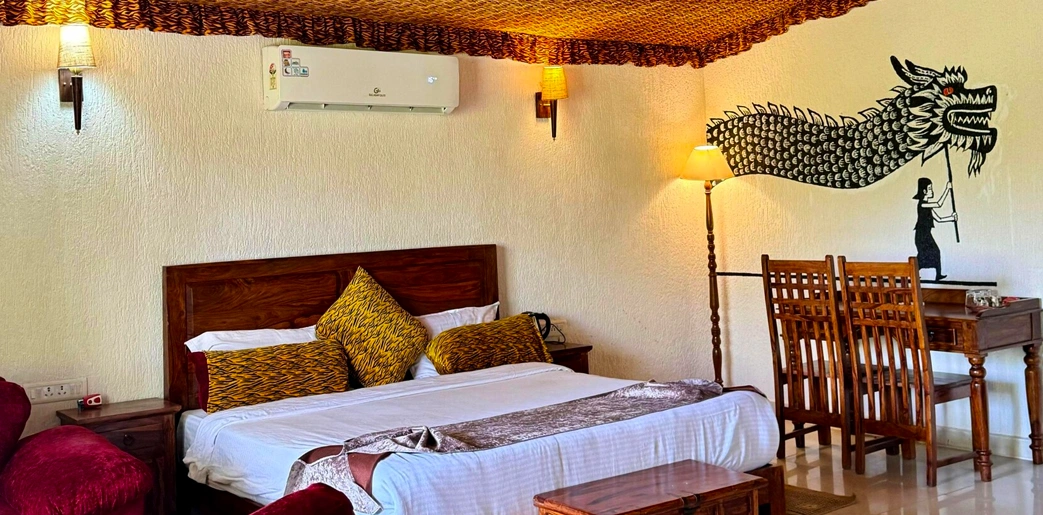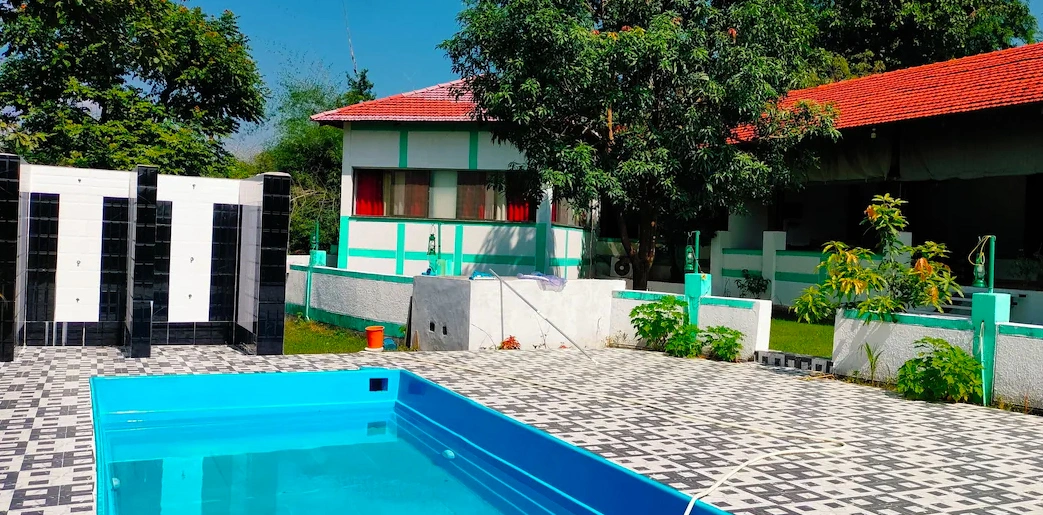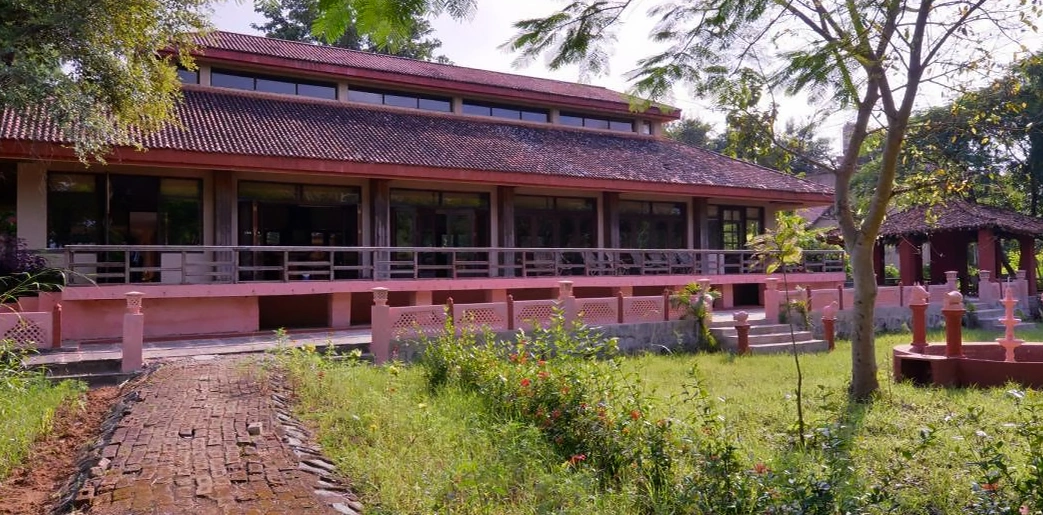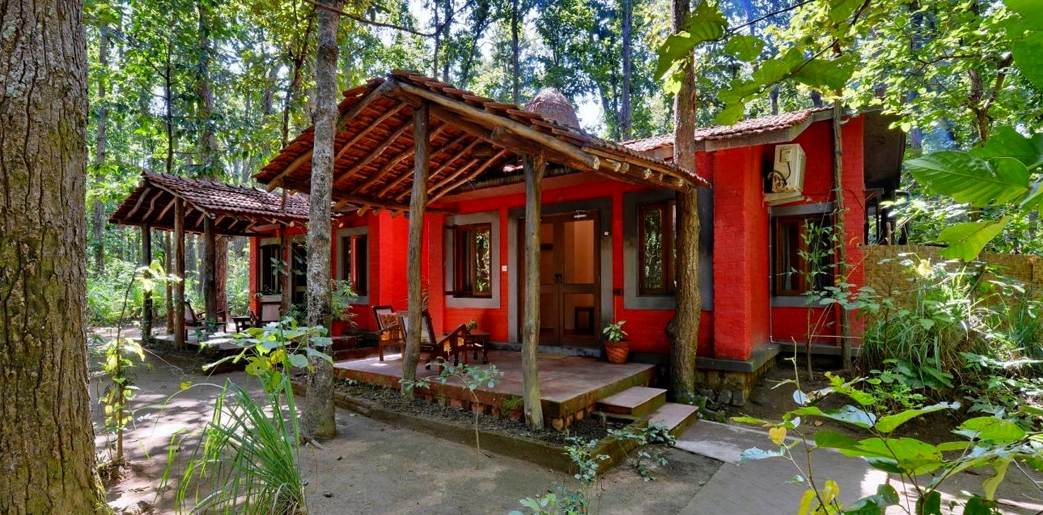Kanha National Park

Kanha National Park, also known as Kanha-Kisli National Park the biggest of all national parks in Madhya Pradesh.
It covers two districts called Mandla and Balaghat.
The whole place covers about 3500 square kilometers. Two protected areas within Kanha National Park Madhya Pradesh are called Hallon and Banjar, 250 and 300 square kilometers each. The Kanha National Park has been around since 1955 and officially became the Kanha Tiger Reserve in 1973. Today, it's a massive 940 square kilometers. People love coming here because it's one of the most popular wildlife sanctuaries in India.
Kanha is known for being super well-managed, It’s one of ‘Navratanas’ like one of the shining star-1s in India's Project Tiger. And if you're visiting, don't miss Bamni Dadar, also known as Sunset Point. It's the perfect spot to catch a breathtaking sunset while watching Sambhars and Gaurs nearby.
This park is especially known for tigers, along with them there's a lot of different flora and fauna that can be found here, like over 1000 species of flowering plants. The forest here is a mix of all types of trees, from sal to bamboo you can find various kinds of trees here and it makes it a beautiful landscape.Kanha National Park is a nice place for bird watchers also because it has a wide variety of bird species.
Kanha National Park’s Journey
The history of Kanha National Park dates back to the Gond Dynasty when they ruled the area before the 19th century and the forest area was not famous. The people of Baiga and Gond tribes farmed using old ways. They have a good knowledge of animals and their behavior. Then in the 19th century, many rules were made to protect the forest area and people were not allowed to cut trees like Sal, Teak, Saja, Shisham, and Bija.
Kanha became a national park back in 1955 to protect the plants and animals. Then in 1973, it became a Tiger Reserve area and it gained fame when Rudyard Kipling got inspired by this area and wrote " The Jungle Book " .
The park has taken part in many conservation efforts to protect the wild animals. The Kanha National Park Madhya Pradesh is home to many animals like the Royal Bengal Tiger, sloth bears, Indian leopards, barasingha deer, and Indian wild dogs with many more. People can see these animals by making Kanha National Park bookings. This wild area has become a popular destination among those people who have an interest in animal sightings and who are nature lovers.
| GEOGRAPHICAL DETAILS ABOUT PARK | |
|---|---|
| 1. Total Forest Area | 940 Square Kilometres. |
| 2. Core Area | 940 square kilometres . |
| 3. Buffer area | 1067 Square kilometres. |
| 4. Type of forest | Moist Deciduous Forest, Dry Deciduous Forest. |
| 5. Rivers | Banjar River . |
| 6. Hills | valley meadow and plateau meadow |
| 7. Temperature | extreme- hot and dry (April-June) – max temperature- 43° C . |
| ROAD DISTANCE FROM NEARBY PLACES |
|---|
| Distance from Dindori - 101 km |
| Distance from Bhedaghat - 145 km |
| Distance from Keolari - 73.3 km |
| Distance from Ghansor - 86.2 km |
| Distance from Bemetara - 141 km |
| Distance from Malanjkhand 20.6 km |
| Distance from Lormi - 45.2 km |
Flora & Fauna of Kanha National Park
Flora of Kanha National Park
Kanha National Park is really special because it has a diverse plant life. You can find 200 types of flowering plants. This is the only national park in India that has this much plant life. Not only plants, the Kanha National Park flora includes 70 types of trees. Apart from these, you can also spot several aquatic plants in Tal (lake) which are said to be a lifeline for the wetland species and migratory birds.
This park has mainly three types of forest area - moist mixed deciduous, moist Peninsular Sal, and dry deciduous mixed forests. This park has a moderate and favorable climate along with varied topography and because of that, it supports the growth of a rich and different flora inside this huge Park.
The major flora in Kanha National Park :-
This area has Saja, Sal, Tendu, Palas, Lendia, Dhawa, Bija, Mahua, Aonla, Bamboo, Achar, grasses, climbers, which are important for animals and birds. Climbers and forbs can also be found here. It's such a beautiful place that Rudyard Kipling, the author of "The Jungle Book," got inspired by this area and wrote his book.
In the highland forest area of Kanha, there is a tropical moist dry deciduous type of forest. There you can easily find the most popular Indian Ghost Tree( Kullu). Talking about the slopes, you can spot bamboo ( Dendrocalamusstrictus) with a difference.
Because of the wide variety of flora in Kanha National Park, it is home to many types of animals and birds. It's such a beautiful place that Rudyard Kipling, the author of "The Jungle Book," got inspired by this area and wrote his book.
To preserve the flora, the MP Forestry Project has organized some eco-development processes in the buffer zone of this park. The 106 eco-development committees in the buffer areas and 25 in the core zone along with Reserve Management are undertaking these preservation techniques. Many surrounding villages provide a supporting hand in preserving the flora of this wild park.
Fauna of Kanha National Park
If you want to experience the wide variety of animals in their natural habitat then this Kanha National Park is best for you. It’s a place that is filled with a variety of plants and because of that, it has a huge animal base. Tourists from all over the world come here to see the animals in their natural habitat. It is one of the best wildlife reserves in India.
A variety of animals call this park home and it's the only habitat of the rare hard ground Barasingha, often referred to as “the jewel of Kanha” and most famed the Indian Tigers. This huge park has a nice animal base that is divided into mammals, reptiles, fishes, and birds. Let’s know about them in detail
The major fauna of Kanha National Park :-
Mammals found in the park are Tiger, Langur, Panther, Chital, Sambar, Barasingha, Gaur, Langur, Wild pig, Blackbuck, Barking deer, Chousingha, Gaur, Langur, Wild pig, Jackal, Sloth bear, and Wild dog.
Reptiles found in the park are Python, Russell’s Viper, Indian Monitor, Indian Krait, Common Rat Snake, Common Skink, Fan Throated Lizard, Indian Cobra, Indian Garden Lizard, etc.
Fishes found in the park are Giant Danio, Common Rasbora, Mud Perches, Brown Snakehead, and last but not least Green Snakehead.
There are more than 300 species of birds in Kanha National Park, some of the major ones are the Indian Roller, Bee-eaters, Cattle Egret, Blossom-Headed Parakeets, Crested Serpent Eagle, Grey Hornbill, Golden Oriole, and Pied Hornbill, Woodpecker, Pigeon, White-eyed Buzzard, White-breasted Kingfisher, Paradise Flycatchers, Mynas, Peafowl, Spotbill Duck.
Things to do in Kanha National Park
Gypsy Safaris
Gypsy safaris are the most popular way to explore the huge area of this wild park. People can make Kanha National Park Booking to enjoy the gypsy safari that will give them a thrilling chance to explore the park on wheels.
Read more +Nature Walks and Birdwatching
Many people come to Kanha National Park Madhya Pradesh to enjoy a nice time inside the natural beauty of this area. Here, they can see a wide variety of flowering plants and also many bird species. People can
Read more +Photography
Kanha National Park is filled with many bird species and flowering plants along with wild animals. Photographers must visit this park to take some good pictures. If you want to take nice pictures but you don’t have a camera then don’t worry, you can
Read more +Visit local village areas
Madhya Pradesh has its own culture and traditions. You can see their traditions and explore their culture by going to the villages that are situated around the Kanha National Park Madhya Pradesh. People can talk with the local communities
Read more +Accommodation In Kanha National Park
Key Information About Kanha
| About Kanha Information | ||
|---|---|---|
| 1 | Location | Mandala and Balaghat, Madhya Pradesh, India |
| 2 | Established | As a National Park back in 1955 and became a tiger reserve in 1973. |
| 3 | Total Area | 940 square kilometers |
| 4 | Major Fauna | Tiger, Panther, Chital, Barasingha, Sloth bear, Black buck, Sambar, Barking deer, Gaur, Langur, Wild pig, Jackal, Wild dog, Chousingha. |
| 5 | Safari Type | Gypsy Safari |
| 6 | Safari Timings | Early Morning and Evening Safaris can be enjoyed |
| 7 | Nearest Railway Station | Gondia Junction and Jabalpur Junction |
| 8 | Nearest Airport | Jabalpur Airport |
| 9 | Safari Zones | In Total 8 Safari Zones |
| 10 | Climate Difference | From October to February, the park remains pleasant. From March to May, the park remains hot and dry and in June, July, August, and September - it experiences rainfall. |
| 11 | Bird Species | Over 300 species of resident and migratory Birds. Major ones are Indian Roller, Malabar pied hornbill, Red-wattled lapwing, Black-hooded Oriole, Scarlet Minivet, etc. |
| 12 | Forest Type | Moist Mixed Deciduous, Moist Peninsular Sal, and Dry Deciduous Mixed |
| 13 | Conservation Efforts | Anti-poaching vigilance, Habitat Management, Barasingha Conservation, Translocation of animals, Relocation of Villages, Patrolling Camps, Tiger Protection Force, Fire protection, Community Involvement, Monitoring and Research |
| Note: The best time to visit this park is from October to June and the core zones remain open in that time. However, some buffer zones of this national park remain open throughout the year for gypsy safari rides. So make your Kanha National Park booking accordingly. | ||
Our Latest News & Blog
Explore the best blog posts and recent news related to Kanha National Park.

How to Identify Different Deer in Kanha National Park
Kanha National Park is famous for its tall sal forests, wide grasslands, and the wildlife species that are...
READ MORE
Most Peaceful Resorts to Stay Near Kanha
Kanha is one of the most famous national parks of India, and it is the best spot to...
READ MORE
Winter Safari Handbook for Kanha National Park
The winter safari in Kanha offers tourists an amazing chance to explore the beauty of the park in...
READ MORE